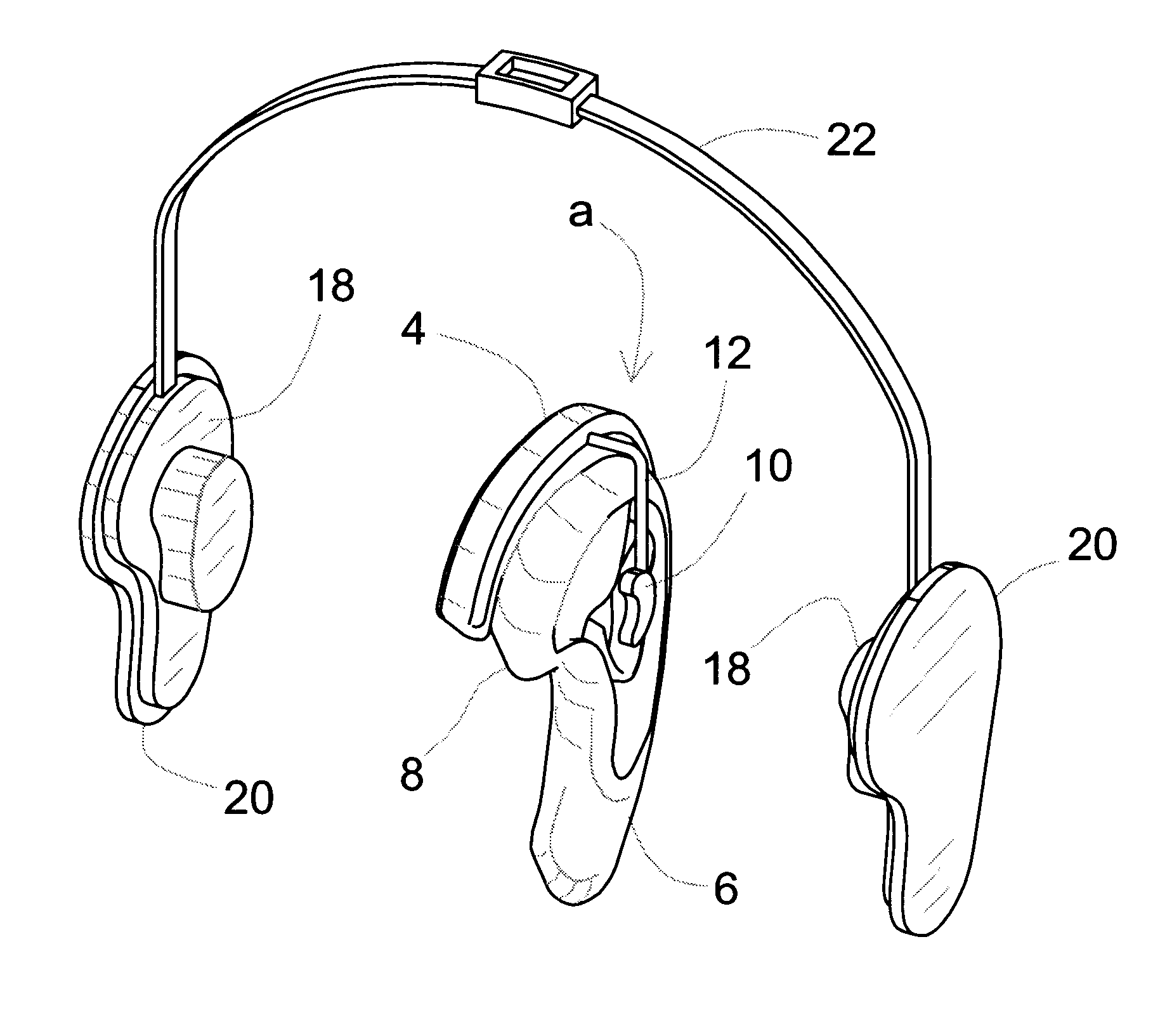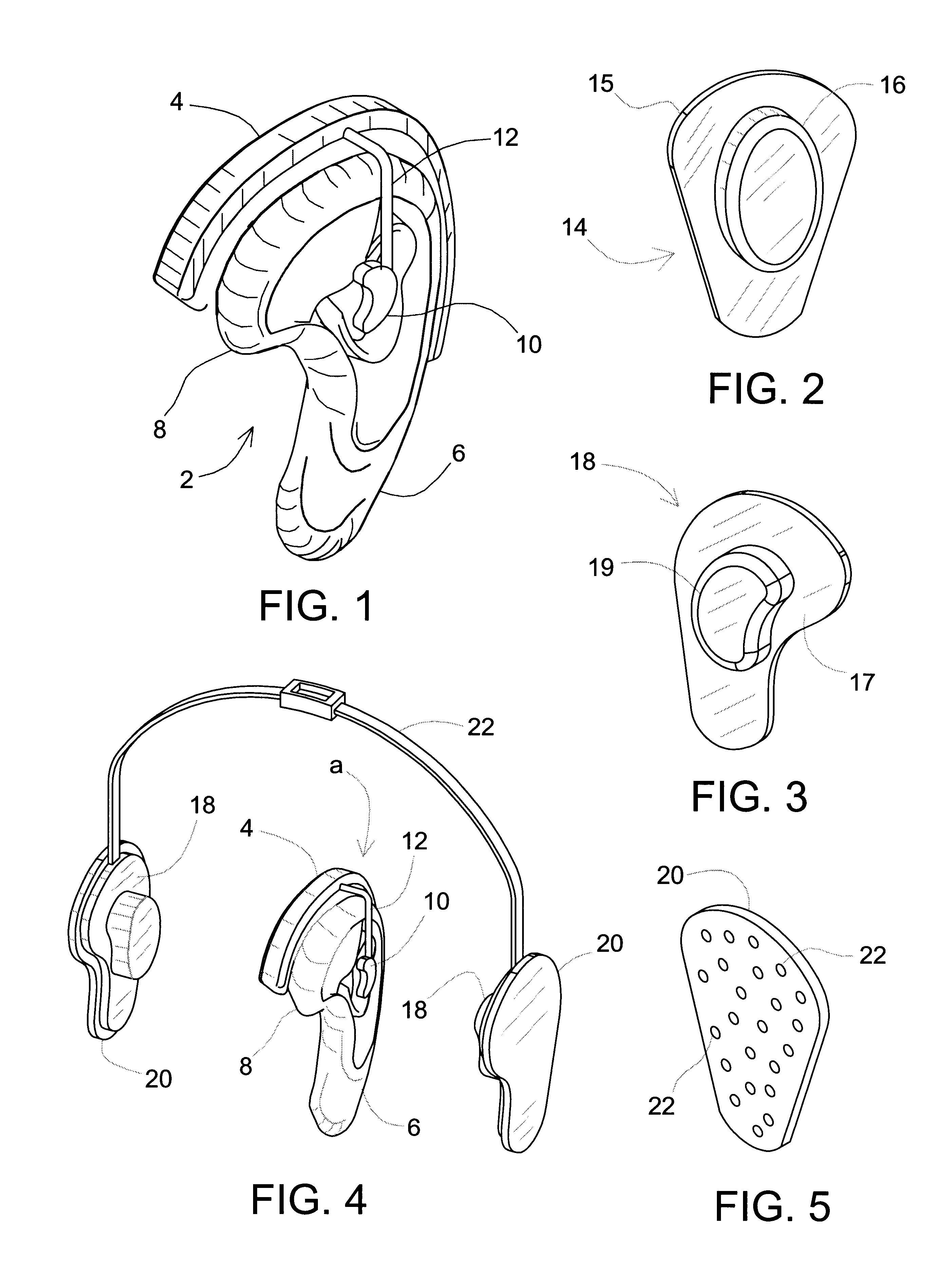Hearing aid assembly
a technology for hearing aids and components, applied in the field of hearing aids, can solve the problems of not being entirely suitable for infants or young children, not being able to fully function, and even some active adults, and the process is expensiv
- Summary
- Abstract
- Description
- Claims
- Application Information
AI Technical Summary
Benefits of technology
Problems solved by technology
Method used
Image
Examples
Embodiment Construction
U.S. Pat. No. 4,349,081 is directed to a hearing aid harness. Since it is chiefly for patients not of sufficient age to be instructed in the importance of retaining hearing aids in their proper positions the feedback problem is not dealt with. And, feedback noise would not be eliminated by a plurality of transverse straps. The straps which hold the hearing aid in the ear merely maintain the position of the hearing aid. Since there is no resiliency factor, there is no inward force on the hearing aid to maintain intimate contact between the ear canal and the hearing aid. For a better understanding of such differences the invention will now be discussed in greater detail in conjunction with the accompanying drawings.
FIG. 1 is an isometric view showing an ear carrying the type of hearing aid improved herein.
FIG. 2 is an isometric view illustrating one form of the compress of this invention.
FIG. 3 is an isometric view of a preferred form of the compress of the invention.
FIG. 4 is a more ...
PUM
 Login to View More
Login to View More Abstract
Description
Claims
Application Information
 Login to View More
Login to View More - R&D
- Intellectual Property
- Life Sciences
- Materials
- Tech Scout
- Unparalleled Data Quality
- Higher Quality Content
- 60% Fewer Hallucinations
Browse by: Latest US Patents, China's latest patents, Technical Efficacy Thesaurus, Application Domain, Technology Topic, Popular Technical Reports.
© 2025 PatSnap. All rights reserved.Legal|Privacy policy|Modern Slavery Act Transparency Statement|Sitemap|About US| Contact US: help@patsnap.com


